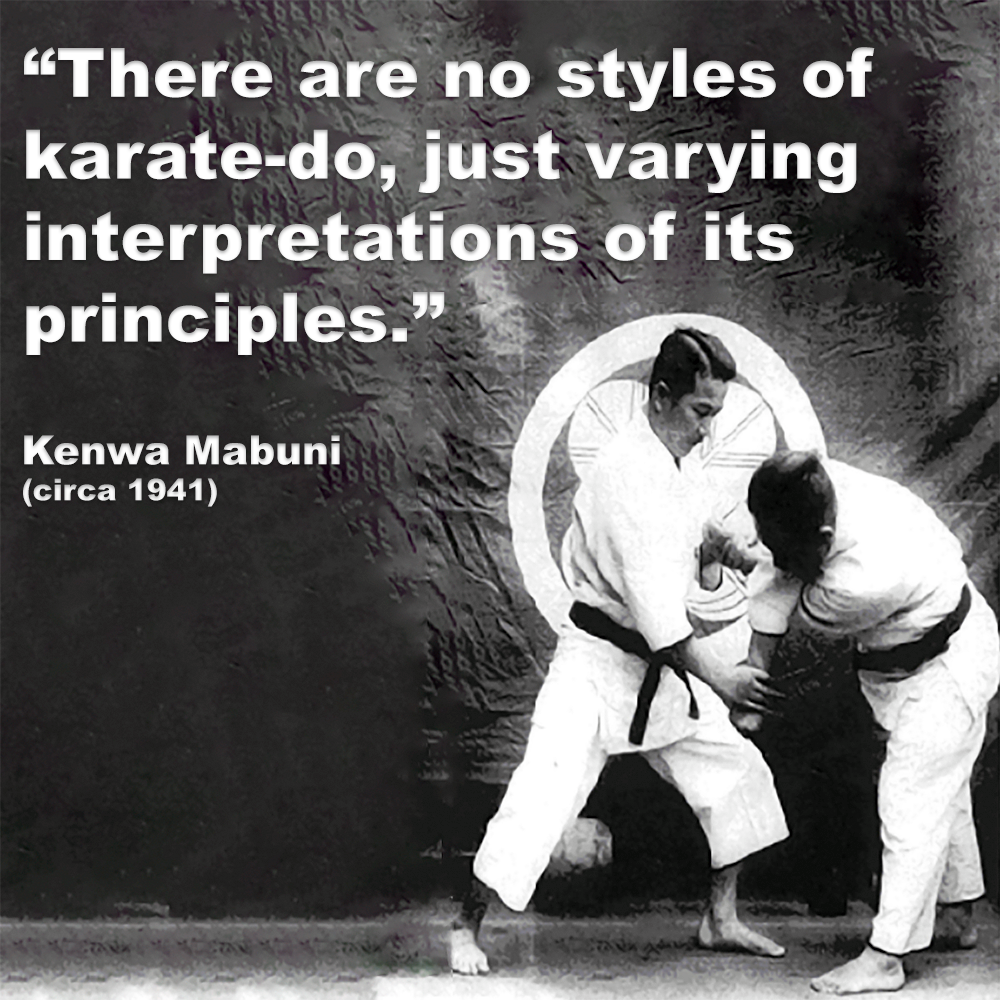
Talk to anyone about the martial arts and it is very likely that they will ask you, “what style do you practice?”.
.
How did all these various styles come into existence? Are they really that important? Should the existing styles be preserved?
.
It’s often stated that as you gain experience over the years that you train karate, it should become your own.
.
The concept of “Shu Ha Ri” (see recent article) is the process of this. There are many different ways you can train karate. Different emphases on principles and techniques, alternative approaches to learning, with different syllabus’. In the end these are variations of movements and tactics that have very little to distinguish them from other martial arts.
.
Different approaches may exist within ‘styles’ but the actual differences between those styles can be quite minor. In the end it is still karate.
.
Gichin Funakoshi was critical of the trend towards the creation of ‘styles’ of karate. He was not alone in his concern that styles could be divisive and detrimental to karate. Kenwa Mabuni is also on record of saying that he felt all karate was one, and what people considered to be styles were simply variations in the expression of karate’s common principles.
.
The existing styles are frequently regarded as sacrosanct with any minor change being viewed as a form of heresy. This is not good for karate, it is not in-keeping with what the past masters themselves did.
.
The past masters originally sought what they considered to be the best solution to the problem of violence. In the martial arts, styles can become a barrier to progress if they are viewed as something that must always be preserved and can never be deviated from.
.
As you gain experience in karate you must be able to adapt what you learn from your own practical knowledge and circumstances. In effect, “making karate you own”, internalizing what you have learned and in that sense it becomes a part of you. This does not necessarily mean that you are doing a different ‘style’ to your teacher(s) or something ‘new’.
.
Students though have to put in the consistent time and the training hours, to internalize both principles and techniques.
.
Furthermore, despite good instruction, it would be foolish to assume that every karateka has the understanding or ability to analyze their approach, or forge their own path.
.
Wanting to direct your training in a different way is not necessarily the same thing as having the underpinning knowledge or skill set to do so, nor is it necessarily a qualification or competency to teach.
.
Observing some instructors analyze kata or build a syllabus is an example of this. Often you can identify people who have years of training, good physical skill sets (some not so) and senior grades, but lack the knowledge and ability to effectively take what they have learned to a different level. Not only because they do not truly understand the context, but also because they do not have the awareness, experience or understanding of the principles that are required to shape a new or different approach.
.
We should view styles as being the foundational study that eventually frees us to express karate in our own way. We should be constantly striving to better understand the problem of violence and improve on the solutions offered by previous generations.
.
If you put in the time and effort, your karate might not be ‘a new style’, but the approach you take, could make karate your own.
.
.
With thanks to Iain Abernethy and John Titchen
.
